
Les Cayes: A Hidden Gem on Haiti's Southern Coast
Discover Les Cayes, Haiti: A coastal paradise with pristine beaches, lush landscapes, and a rich cultural heritage. Perfect for those seeking an authentic Caribbean experience.
Les Cayes is a charming coastal city located in the Southern part of Haiti. It is known for its beautiful beaches, lush landscapes, and vibrant culture. The city's relaxed atmosphere makes it an ideal destination for tourists looking to experience the authentic side of Haiti. One of the highlights of Les Cayes is its stunning coastline. The beaches here are pristine, with soft white sand and clear blue waters. Gelée Beach is particularly popular, where you can enjoy swimming, sunbathing, and fresh seafood from local vendors. For those who love water activities, Les Cayes offers excellent opportunities for snorkeling and diving. Beyond the beaches, Les Cayes is surrounded by verdant hills and fertile plains. The region is famous for its agricultural produce, especially coffee and sugarcane. Visitors can tour local plantations to learn about traditional farming methods and sample some of the finest Haitian coffee. The city itself is full of history and culture. Stroll through the streets of Les Cayes to discover colonial-era buildings and bustling markets. The Cathedral of Les Cayes is a must-see for its impressive architecture and historical significance. Don't miss the lively festivals, where you can experience the vibrant music, dance, and cuisine of the region.
Local tips in Les Cayes
- Visit Gelée Beach early in the morning to avoid crowds and enjoy the serene beauty.
- Try the local seafood at beachside vendors for a truly authentic taste of Les Cayes.
- Take a tour of a coffee plantation to learn about Haiti's famous coffee and enjoy fresh samples.
- Explore the local markets for unique handicrafts and souvenirs.
- Attend a local festival to immerse yourself in the vibrant culture and traditions of Les Cayes.
Les Cayes: A Hidden Gem on Haiti's Southern Coast
Les Cayes is a charming coastal city located in the Southern part of Haiti. It is known for its beautiful beaches, lush landscapes, and vibrant culture. The city's relaxed atmosphere makes it an ideal destination for tourists looking to experience the authentic side of Haiti. One of the highlights of Les Cayes is its stunning coastline. The beaches here are pristine, with soft white sand and clear blue waters. Gelée Beach is particularly popular, where you can enjoy swimming, sunbathing, and fresh seafood from local vendors. For those who love water activities, Les Cayes offers excellent opportunities for snorkeling and diving. Beyond the beaches, Les Cayes is surrounded by verdant hills and fertile plains. The region is famous for its agricultural produce, especially coffee and sugarcane. Visitors can tour local plantations to learn about traditional farming methods and sample some of the finest Haitian coffee. The city itself is full of history and culture. Stroll through the streets of Les Cayes to discover colonial-era buildings and bustling markets. The Cathedral of Les Cayes is a must-see for its impressive architecture and historical significance. Don't miss the lively festivals, where you can experience the vibrant music, dance, and cuisine of the region.
When is the best time to go to Les Cayes?
Iconic landmarks you can’t miss
Laferriere Citadel
Discover the historic Laferriere Citadel, a UNESCO World Heritage site in Haiti, offering breathtaking views and a rich cultural experience for travelers.
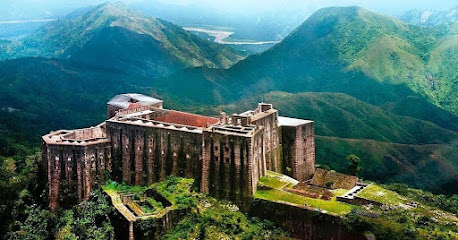
Sans Souci Palace
Explore the grandeur of Sans Souci Palace, Haiti's historical gem, where royal ambitions meet breathtaking natural beauty.

Heroes Monument of Vertières
Explore the Heroes Monument of Vertières, a historical gem in Cap-Haitien, commemorating Haiti's fight for freedom with beauty and serenity.
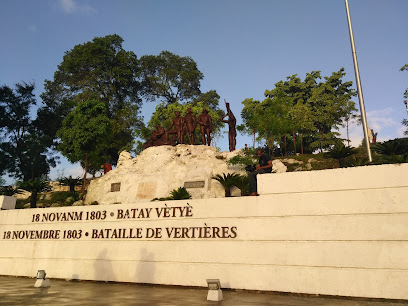
Fort Jacques et Fort Alexandre
Explore the rich history and breathtaking views at Fort Jacques et Fort Alexandre, a historic fortress in the scenic hills of Haiti.
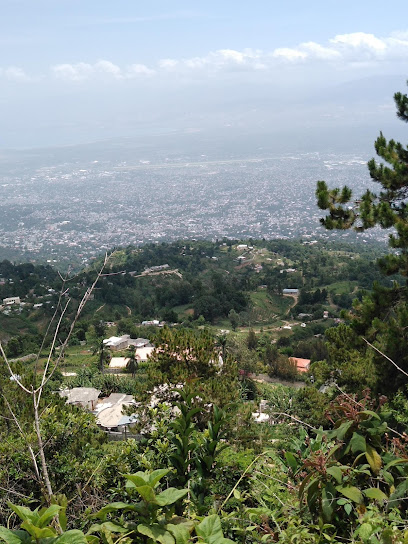
Le Rosier Fast Food
Experience the authentic taste of Haiti at Le Rosier Fast Food, a must-visit restaurant in Les Cayes offering local flavors in a vibrant atmosphere.
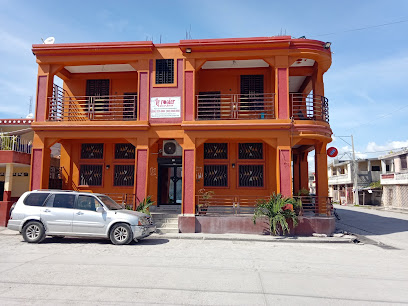
Carrefour Desruisseaux
Experience serenity at Carrefour Desruisseaux, a beautiful park in Miragoane, Haiti, perfect for relaxation, picnics, and enjoying nature's beauty.
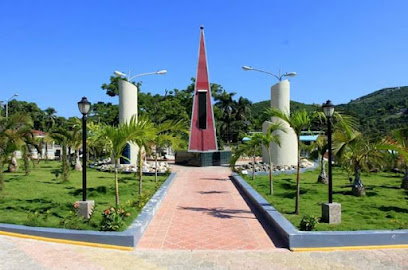
Saut-Mathurine
Experience the breathtaking beauty of Saut-Mathurine Waterfall, a hidden gem in Haiti perfect for nature lovers and adventure seekers.

La Cayenne Hôtel
Experience the warmth of Haitian hospitality at La Cayenne Hôtel, your perfect retreat in the heart of Les Cayes.
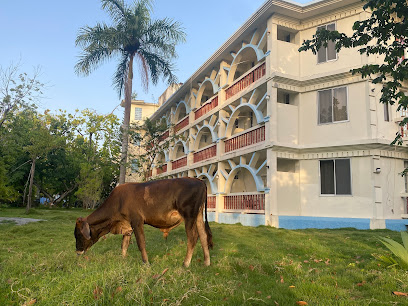
Musée Ogier-Fombrun
Explore the captivating history of Haiti at Musée Ogier-Fombrun, where heritage and culture come alive through engaging exhibits and artifacts.

Cayes Botanical Garden
Explore the lush landscapes of Cayes Botanical Garden in Les Cayes, Haiti, a tranquil retreat showcasing diverse plant life and natural beauty.

Antoine-Simon Airport MTCA
Experience the charm of southwestern Haiti through Antoine-Simon Airport, your gateway to Les Cayes' stunning landscapes and vibrant culture.
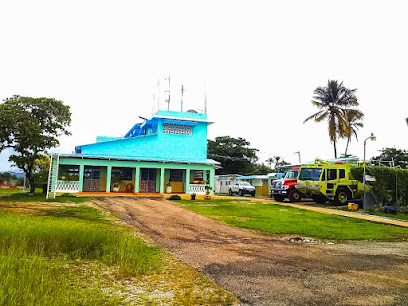
Vetiver Hills Hotel - Restaurant
Experience the rich flavors of Haiti amid the stunning vistas of Les Cayes at Vetiver Hills Hotel - Restaurant.
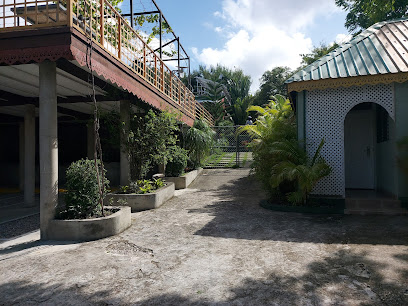
Transport Chic - Cayes
Discover the essential transportation hub in Les Cayes, providing reliable services to explore the beauty and culture of Haiti's stunning coastline.
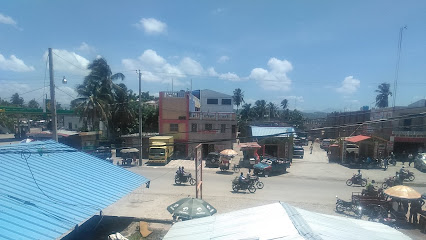
La Cayenne Bar.Restaurant.Pâtisserie.Crémerie. Location Matériels Et Équipements
Discover authentic Haitian cuisine at La Cayenne in Les Cayes, where every dish captures the vibrant flavors of the Caribbean.
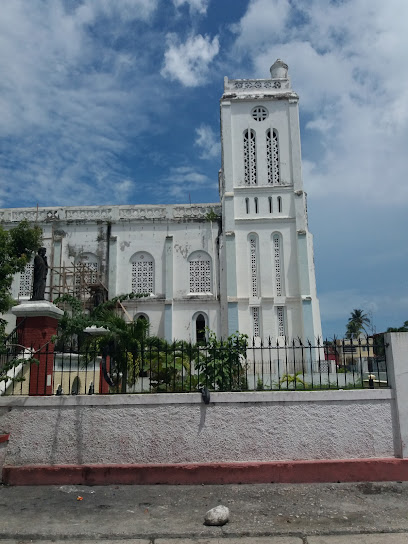
Caribbean Hôtel Cayes
Discover Caribbean Hôtel Cayes: Your Gateway to the Vibrant Culture and Stunning Beauty of Les Cayes, Haiti.
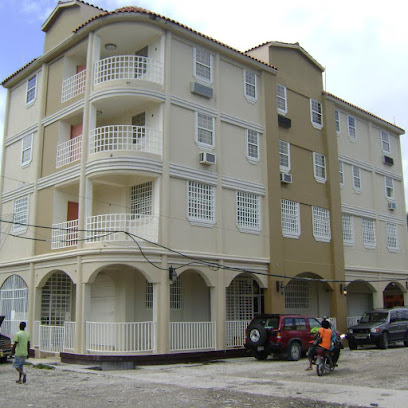
Unmissable attractions to see
Place d'Armes
Experience the vibrant local culture and natural beauty at Place d'Armes, a serene park in the heart of Les Cayes, Haiti.
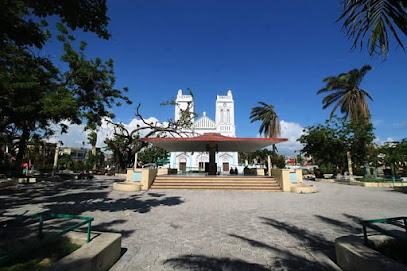
Bassin Bleu
Explore the stunning Bassin Bleu in Jacmel, Haiti, a natural paradise of vibrant blue pools and lush scenery, perfect for adventure and relaxation.
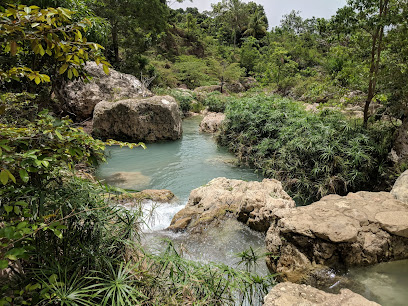
Cave Grotte Marie-Jeanne
Discover the breathtaking beauty of Grotte Marie-Jeanne, a stunning cave system in Haiti's picturesque Port-a-Piment, perfect for adventure and nature lovers.
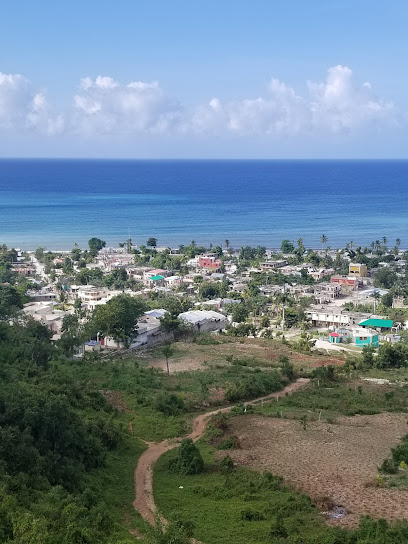
Gelée Beach
Explore the serene beauty of Gelée Beach, a cultural landmark in Haiti, perfect for relaxation and vibrant marine adventures.

Église Sacré-Cœur
Discover the stunning architecture and serene atmosphere of Église Sacré-Cœur, a cultural gem in Les Cayes, Haiti.
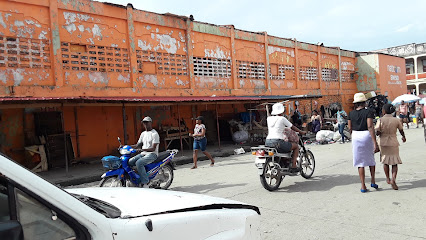
Cathédrale des Cayes
Explore the architectural beauty and rich history of Cathédrale des Cayes, a serene spiritual haven in Les Cayes, Haiti.
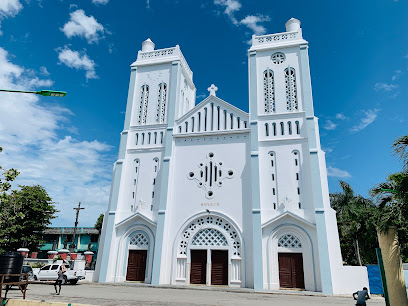
Grand Bois National Park
Discover the breathtaking beauty of Grand Bois National Park in Tiburon, Haiti, a paradise for nature lovers and outdoor adventurers.

Cayes
Experience the charm of Cayes, Haiti's coastal paradise known for its stunning beaches, rich culture, and warm hospitality, perfect for every traveler.

Essential places to dine
Le Rosier Fast Food
Discover authentic Haitian cuisine at Le Rosier Fast Food in Les Cayes—where local flavors meet warm hospitality.
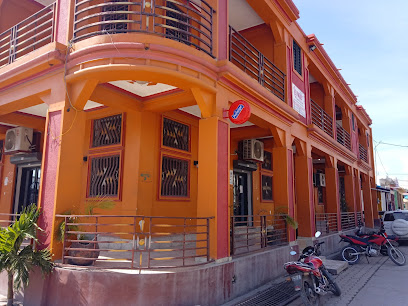
Tropical Bar Restaurant
Experience authentic Haitian cuisine at Tropical Bar Restaurant in Les Cayes - where flavor meets hospitality in a tropical paradise.
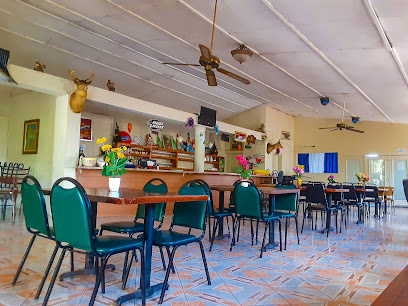
Vetiver Hills Hotel - Restaurant
Experience authentic Haitian flavors at Vetiver Hills Hotel - Restaurant in Les Cayes amidst stunning natural beauty.

Over Here bar Restaurant and grill
Discover vibrant Caribbean flavors at Over Here Bar Restaurant and Grill in Les Cayes – an unforgettable dining experience awaits.

Nami
Discover Nami in Les Cayes: A Culinary Haven Blending Local Flavors with Global Inspirations for Unforgettable Dining.
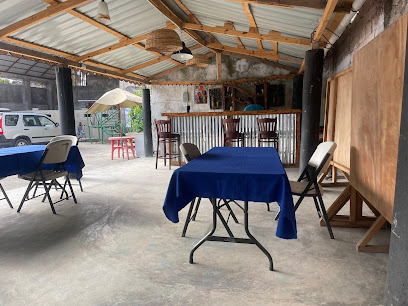
Okay Délice
Discover the vibrant culinary scene at Okay Délice in Les Cayes—where local flavors meet a cozy lounge atmosphere.
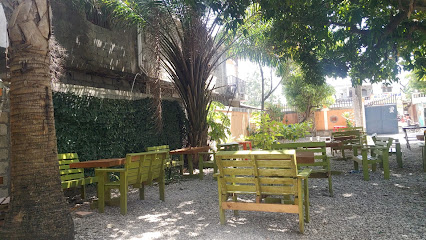
La Cayenne Bar.Restaurant.Pâtisserie.Crémerie. Location Matériels Et Équipements
Discover the vibrant flavors of Haiti at La Cayenne Bar.Restaurant.Pâtisserie.Crémerie in Les Cayes – A must-visit destination for food lovers.
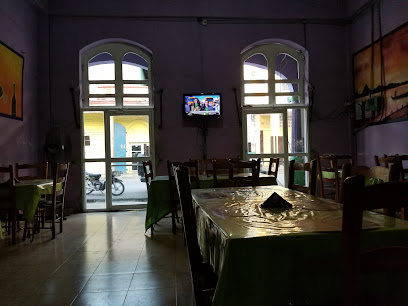
Hot Spot
Discover authentic Haitian cuisine at Hot Spot in Les Cayes - a culinary haven celebrating local flavors and warm hospitality.
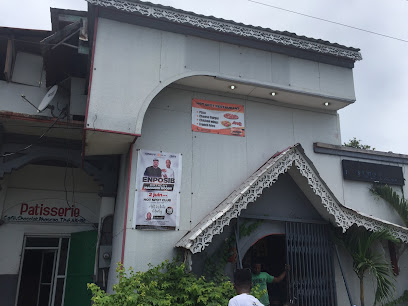
Pen Dore
Discover delicious fast food at Pen Dore in Les Cayes—where local flavors meet international favorites for every taste.
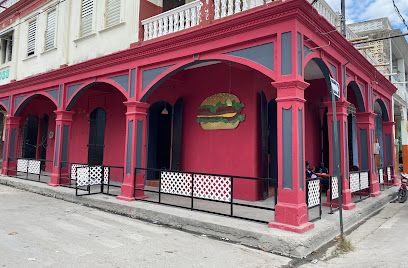
La Bonne Cuisine
Experience authentic Haitian cuisine at La Bonne Cuisine in Les Cayes – where every dish tells a story of flavor and tradition.

10 Dwèt Restaurant
Experience authentic Haitian flavors at 10 Dwèt Restaurant in Les Cayes - a delightful spot for tourists seeking local cuisine.
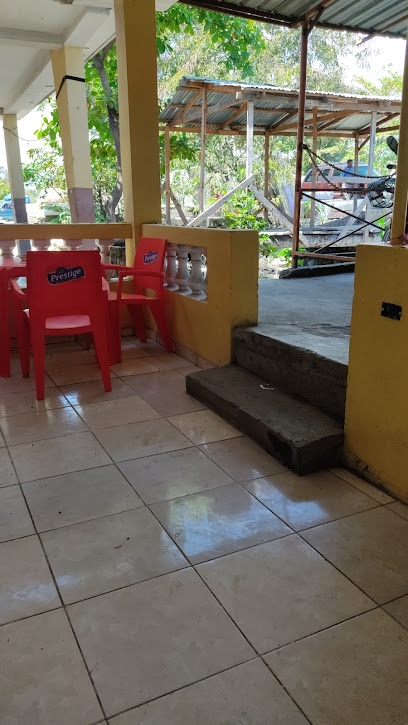
Club on the Bay
Discover authentic Haitian flavors with stunning waterfront views at Club on the Bay in Les Cayes.
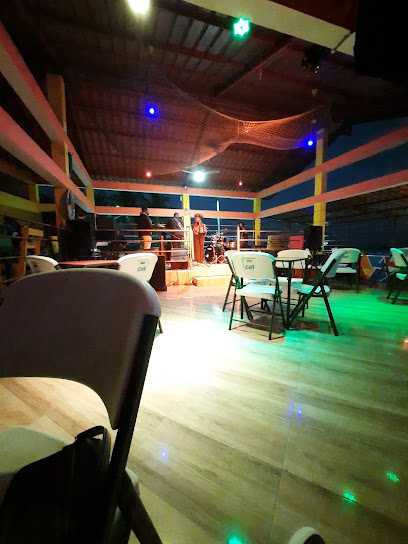
Rood Myr Tam Restaurant
Experience authentic Haitian cuisine at Rood Myr Tam Restaurant in Les Cayes – where every dish tells a story.

Café D’Val
Discover Café D’Val in Les Cayes: A grill paradise offering authentic Haitian flavors and a welcoming ambiance for all travelers.
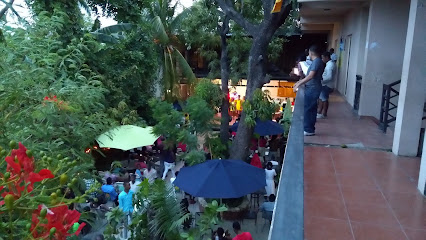
Pain D'oré
Experience authentic Haitian cuisine at Pain D'oré – where every dish tells a story of flavor and tradition.
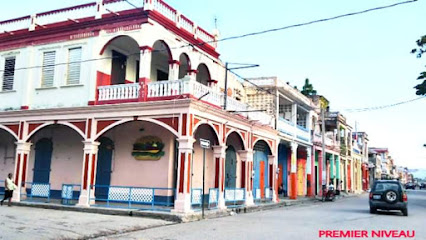
Markets, malls and hidden boutiques
New Star Market
Explore the vibrant New Star Market in Les Cayes for a taste of local culture and fresh Haitian produce.
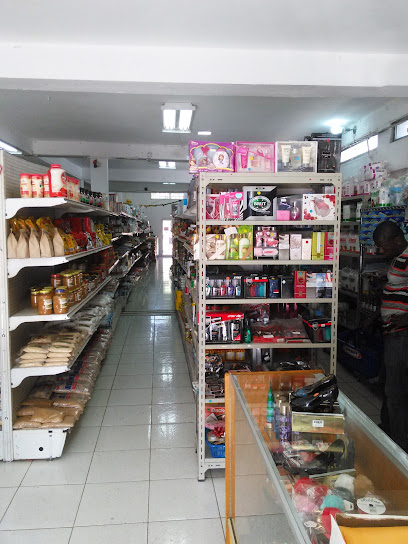
Dépôt de Vernet
Explore the vibrant local culture at Dépôt de Vernet, a consignment shop in Les Cayes offering unique treasures and authentic Haitian craftsmanship.
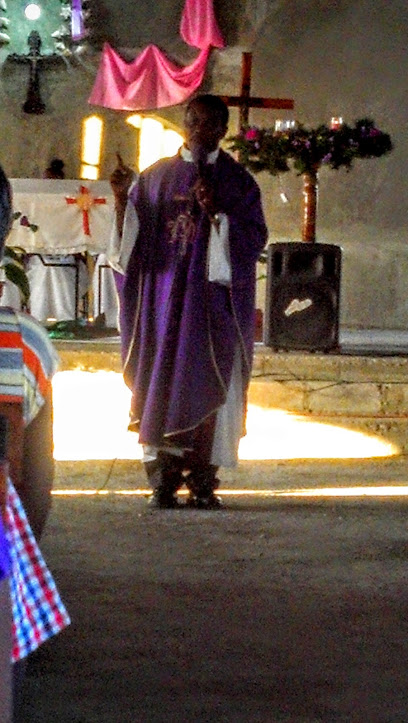
Image Plus
Discover quality tools and supplies at Image Plus, the premier hardware store in Les Cayes, Haiti, blending local charm with practical solutions.
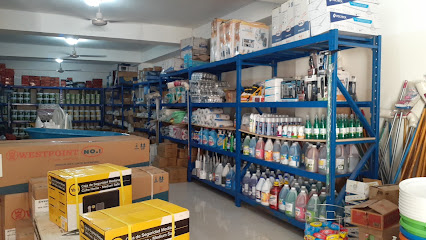
Quotidien Shop
Discover the vibrant Quotidien Shop in Les Cayes, a unique shopping mall showcasing local crafts, food, and culture in the heart of Haiti.

Medimarket Venezuela
Discover Medimarket Venezuela in Les Cayes, your ultimate destination for health and beauty products to enhance your travel experience.
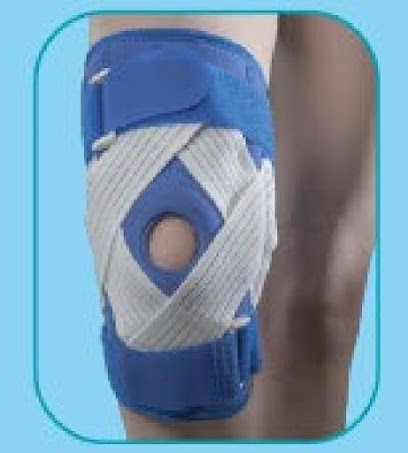
ALEX STORE
Experience the vibrant culture of Haiti through local flavors and products at ALEX STORE, the premier supermarket in Les Cayes.

Pas à Pas
Explore Pas à Pas in Les Cayes for a rich selection of tools and materials, perfect for every DIY project and home improvement need.
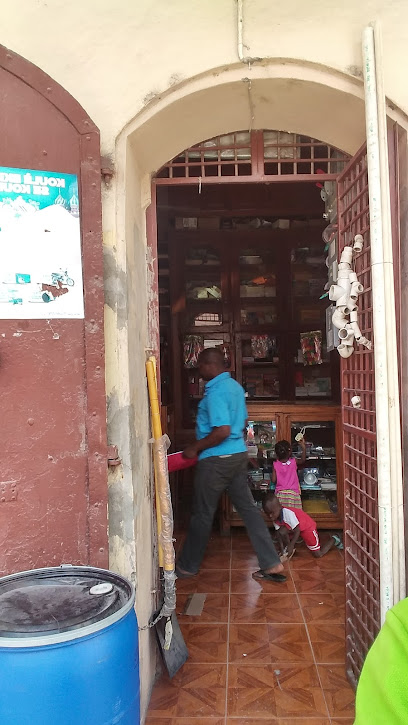
Dada Shop
Explore the vibrant Dada Shop in Les Cayes for a true taste of local Haitian culture and cuisine.
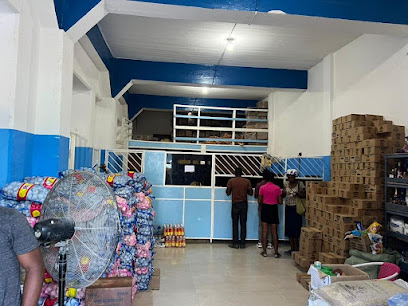
CHANT-U Store & More
Discover unique fashion accessories and local craftsmanship at CHANT-U Store & More in Les Cayes, Haiti.

Habitat
Explore the vibrant local culture of Les Cayes at Habitat Grocery Store, your gateway to fresh produce and authentic Haitian ingredients.

Mama Collection
Explore Mama Collection in Les Cayes for unique couture styles that celebrate Haitian craftsmanship and vibrant textile heritage.

Annie shopping Store
Experience the vibrant local culture and fresh produce at Annie Shopping Store in Les Cayes, a must-visit destination for all travelers.

Source - International Marketplace
Discover the vibrant essence of Haitian culture at Source - International Marketplace, a boutique in Les Cayes offering unique handcrafted treasures.

SHEKHINAH Boulangerie et Boutique
Discover the delightful tastes of Haiti at SHEKHINAH Boulangerie et Boutique, a bakery in Les Cayes offering exquisite pastries and local flavors.
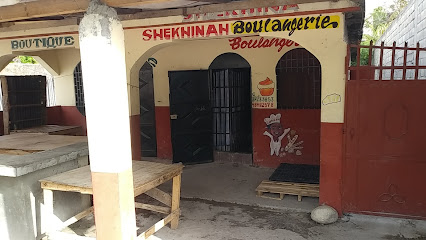
Atelye Gran Sem
Discover the vibrant crafts of Haiti at Atelye Gran Sem, a treasure trove of artistry in Les Cayes offering unique handmade souvenirs.
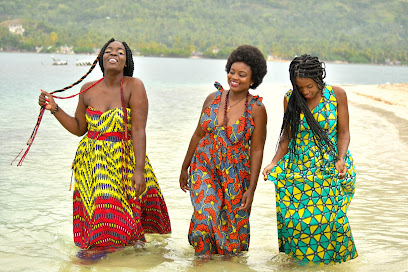
Essential bars & hidden hideouts
Over Here bar Restaurant and grill
Indulge in authentic Haitian flavors at Over Here Bar Restaurant and Grill, a must-visit dining destination in Les Cayes.
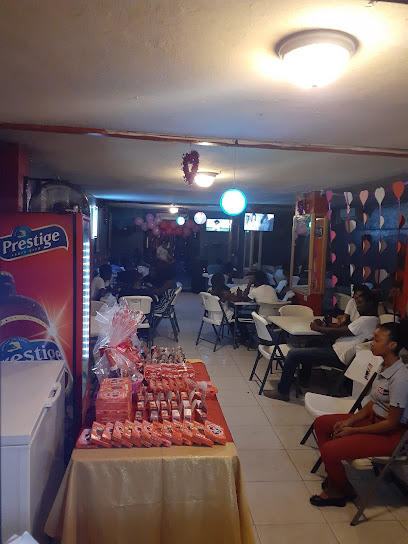
Hotel and Bar
Discover the vibrant atmosphere of the Hotel and Bar in Les Cayes, where Caribbean hospitality and local flavors await you.
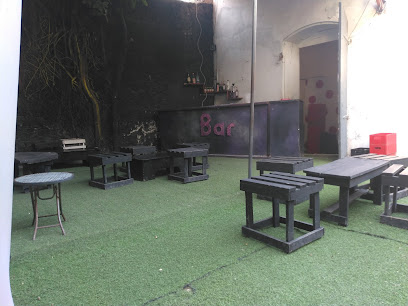
Rendez-vous Bar an Grill
Experience the lively charm of Rendez-vous Bar an Grill in Les Cayes, where local flavors and vibrant atmosphere await you.
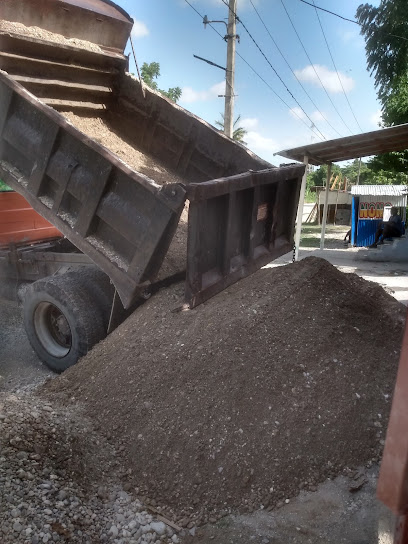
Gelée, Cayes
Experience the vibrant nightlife of Les Cayes at Gelée, a lively bar serving unique local drinks and delicious snacks in a welcoming atmosphere.
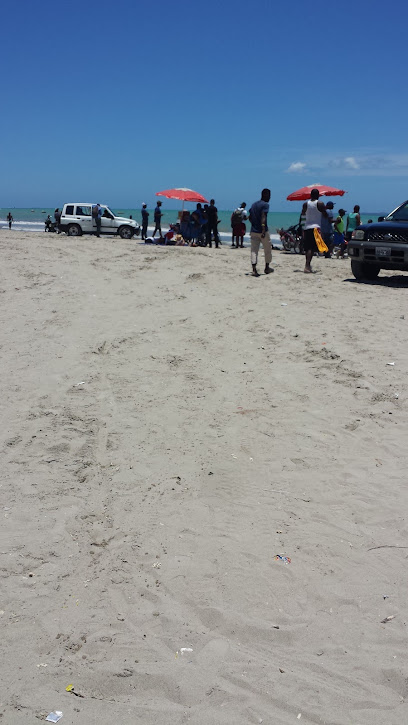
Ti kwen pam bar and grill
Discover the vibrant essence of Haitian cuisine and culture at Ti Kwen Pam Bar and Grill, the perfect spot for relaxation and enjoyment.
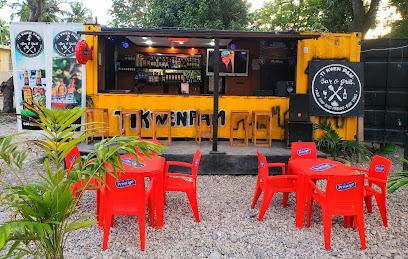
Thelusma
Experience the vibrant atmosphere and local flavors at Thelusma, the must-visit bar in Les Cayes, Haiti.

Ayizan Bar
Experience the vibrant nightlife and authentic Caribbean flavors at Ayizan Bar in Les Cayes, a true hidden gem for tourists seeking local culture.
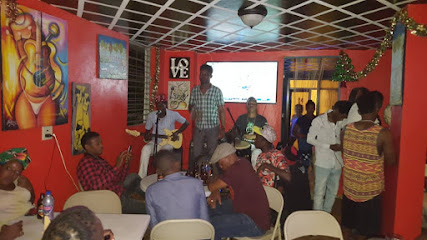
L'as de pic
Discover the vibrant nightlife at L'as de pic, a bar in Les Cayes where local flavors and lively music come together for an unforgettable experience.

Bois moi
Discover the lively atmosphere at Bois Moi, a bar in Les Cayes where local culture meets refreshing drinks and unforgettable experiences.

Alfa drinks and more
Discover the vibrant atmosphere and local flavors at Alfa Drinks and More, a must-visit bar in Les Cayes, Haiti for a refreshing drink and great company.

Promo Bar
Discover the spirited nightlife of Les Cayes at Promo Bar, a local favorite for drinks, music, and memorable experiences in the heart of Haiti.

Classic Hookah
Discover the vibrant atmosphere of Classic Hookah in Les Cayes, where flavorful hookahs and a lively bar scene await tourists seeking relaxation and fun.

Gayac
Experience the lively spirit of Gayac, a vibrant bar in Les Cayes, offering refreshing drinks and a taste of local nightlife.
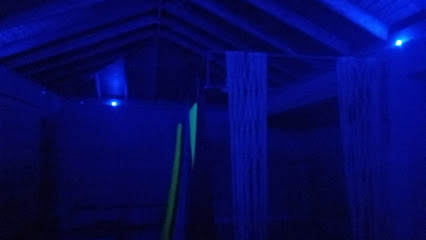
Alez Bar and Grill
Discover the vibrant dining experience at Alez Bar and Grill in Les Cayes, where Caribbean flavors meet lively atmosphere.

Strock House
Enjoy the vibrant atmosphere and local flavors at Strock House, a premier bar in Les Cayes, Haiti.

Local Phrases
-
- HelloBonjou
[bon-zho] - GoodbyeOrevwa
[oh-rev-wah] - YesWi
[wee] - NoNon
[non] - Please/You're welcomeTanpri
[tan-pree] - Thank youMèsi
[meh-see] - Excuse me/SorryEskize mwen
[es-keezay mwenn] - How are you?Kijan ou ye?
[kee-zhahn oo yay] - Fine. And you?Byen. E ou?
[byen. ay oo] - Do you speak English?Eske ou pale angle?
[es-kay oo pah-lay ahn-glay] - I don't understandMwen pa konprann
[mwenn pah kohn-prahn]
- HelloBonjou
-
- I'd like to see the menu, pleaseMwen ta renmen wè meni an, tanpri
[mwenn tah ren-men way men-ee ahn, tan-pree] - I don't eat meatMwen pa manje vyann
[mwenn pah mahn-jay vyan] - Cheers!Santé!
[san-tay] - I would like to pay, pleaseMwen ta renmen peye, tanpri
[mwenn tah ren-men pay-yay, tan-pree]
- I'd like to see the menu, pleaseMwen ta renmen wè meni an, tanpri
-
- Help!Èd!
[ayd] - Go away!Ale!
[ah-lay] - Call the Police!Rele polis la!
[re-lay poh-lees lah] - Call a doctor!Rele yon doktè!
[re-lay yohn dohk-tay] - I'm lostMwen pèdi mwen
[mwenn pay-dee mwenn] - I'm illMwen malad
[mwenn mah-lahd]
- Help!Èd!
-
- I'd like to buy...Mwen ta renmen achte...
[mwenn tah ren-men ashtay] - I'm just lookingMwen jis gade
[mwenn zjee gah-day] - How much is it?Konbyen li ye?
[kohn-byen lee yay] - That's too expensiveSa twò chè
[sah twah chay] - Can you lower the price?Eske ou ka ba pri a?
[es-kay oo kah bah pree ah]
- I'd like to buy...Mwen ta renmen achte...
-
- What time is it?Kisa lè li ye?
[kee-sah lay lee yay] - It's one o'clockSe yon è
[say yohn ay] - Half past (10)Dèmi (10)
[day-mee (dix)] - MorningMaten
[mah-ten] - AfternoonApremidi
[ah-pray-mee-dee] - EveningAswè
[ah-sway] - YesterdayYè
[yay] - TodayJodi a
[zho-dee ah] - TomorrowDemen
[day-men] - 11
[un] - 22
[de] - 33
[twaz] - 44
[kat] - 55
[sank] - 66
[sis] - 77
[sèt] - 88
[uit] - 99
[nef] - 1010
[dis]
- What time is it?Kisa lè li ye?
-
- Where's a/the...?Ki kote yon/la...?
[kee koh-tay yohn/lah] - What's the address?Kisa adrès la ye?
[kee-sah ad-res lah yay] - Can you show me (on the map)?Eske ou ka montre mwen (sou kat la)?
[es-kay oo kah mohn-tray mwenn (soo kaht lah)] - When's the next (bus)?Ki lè pral genyen (bis)?
[kee lay prahl zhenn-yen (bees)] - A ticket (to ....)Yon tikè (pou ....)
[yohn tee-kay (poo)]
- Where's a/the...?Ki kote yon/la...?
History of Les Cayes
-
Les Cayes, originally called Aux Cayes, was founded by French settlers in 1726. The city quickly became an important port and trading post due to its strategic coastal location on the southern peninsula of Haiti. Its name, meaning 'The Reefs,' reflects the natural coral formations that surround the area.
-
In 1793, during the Haitian Revolution, Les Cayes became a significant battleground. French forces clashed with the revolutionary troops led by Toussaint Louverture, who sought to gain control over the city. The battle was crucial in the broader context of the struggle for Haitian independence.
-
In 1815, the South American liberator Simón Bolívar arrived in Les Cayes, seeking support for his revolutionary efforts against Spanish rule in Latin America. Haitian President Alexandre Pétion provided Bolívar with arms, money, and men, which were pivotal in the eventual liberation of several South American countries.
-
In 1963, Hurricane Flora struck Les Cayes with devastating force, causing widespread destruction and loss of life. The hurricane was one of the deadliest in the 20th century, and its aftermath highlighted the city's vulnerability to natural disasters. The event spurred efforts to improve infrastructure and disaster preparedness in the region.
-
Les Cayes is known for its vibrant culture, which is a blend of African, French, and indigenous influences. The city is famous for its lively festivals, such as the annual carnival and the Fête de Notre-Dame, which showcase traditional music, dance, and cuisine. The local arts and crafts, particularly the unique voodoo-inspired art, are also a significant aspect of the city's cultural heritage.
-
Historically, Les Cayes has been a significant economic hub due to its port, which facilitated the export of coffee, sugar, and other agricultural products. In recent years, the city has diversified its economy to include tourism, leveraging its beautiful beaches and historical sites to attract visitors from around the world.
-
On August 14, 2021, a powerful earthquake struck southwestern Haiti, with Les Cayes being one of the hardest-hit areas. The 7.2 magnitude quake caused extensive damage to buildings and infrastructure, leading to a significant humanitarian crisis. The event underscored the need for improved building standards and disaster response mechanisms in the region.
Les Cayes Essentials
-
Les Cayes can be accessed primarily via Toussaint Louverture International Airport in Port-au-Prince, the capital of Haiti. From Port-au-Prince, you can take a domestic flight to Antoine-Simon Airport in Les Cayes, which typically takes around 45 minutes. Alternatively, you can opt for a road trip via National Route 2, which is a scenic but longer journey, approximately 4-5 hours by car or bus.
-
Public transportation in Les Cayes includes buses, minibuses (tap-taps), and moto-taxis. Tap-taps are brightly painted minibuses that are a popular and inexpensive way to get around the city. Moto-taxis are motorbikes that offer quick and nimble transportation for short distances. For more convenience, taxis are also available, but it's advisable to agree on the fare before starting your journey. Renting a car is an option but driving conditions can be challenging.
-
The official currency in Haiti is the Haitian Gourde (HTG). U.S. dollars are also widely accepted, especially in tourist areas. Credit cards are accepted in some hotels, restaurants, and larger stores, but it is advisable to carry cash for smaller establishments and markets. ATMs are available but ensure you have a backup plan as they can occasionally be out of service.
-
While Les Cayes is generally safer than some other parts of Haiti, it is important to stay vigilant. Avoid walking alone at night and stay away from poorly lit or unfamiliar areas. Areas with higher crime rates targeting tourists include the outskirts of the city and some isolated beaches. Always keep your belongings secure and be cautious when using ATMs.
-
In case of an emergency, dial 114 for police assistance, 118 for fire services, and 116 for medical emergencies. Les Cayes has medical facilities, but for serious conditions, you may need to be transferred to Port-au-Prince. Having travel insurance that covers medical emergencies is highly recommended. For minor ailments, local pharmacies (pharmacies) are available.
-
Fashion: Do dress modestly and avoid wearing flashy jewelry. Light, breathable clothing is ideal due to the tropical climate. Religion: Do respect local customs and traditions. Always dress modestly when visiting religious sites. Public Transport: Do be patient and polite when using tap-taps and moto-taxis. Don't argue about fares; agree on the price beforehand. Greetings: Do greet people with a friendly 'Bonjour' or 'Bonjou'. Handshakes are common, and a smile goes a long way. Eating & Drinking: Do try local dishes like griot (fried pork) and fritay (fried snacks). Don't drink tap water; always opt for bottled or purified water.
-
To experience Les Cayes like a local, visit the bustling Marche Aux Dattes (Date Market) where you can find fresh produce and local crafts. Engage with locals, as they are often friendly and willing to share insights about their culture and history. Don't miss a visit to Gelée Beach, a popular local spot, especially during the annual Gelée Festival in August. For a unique experience, take a boat trip to Île à Vache, an island off the coast with beautiful beaches and opportunities for snorkeling.
Trending Landmark in Les Cayes
-
Laferriere Citadel
-
Sans Souci Palace
-
Heroes Monument of Vertières
-
Fort Jacques et Fort Alexandre
-
Le Rosier Fast Food
-
Carrefour Desruisseaux
-
Saut-Mathurine
-
La Cayenne Hôtel
-
Musée Ogier-Fombrun
-
Cayes Botanical Garden
-
Antoine-Simon Airport MTCA
-
Vetiver Hills Hotel - Restaurant
-
Transport Chic - Cayes
-
La Cayenne Bar.Restaurant.Pâtisserie.Crémerie. Location Matériels Et Équipements
-
Caribbean Hôtel Cayes
Nearby Cities to Les Cayes
-
Things To Do in Jérémie
-
Things To Do in Jacmel
-
Things To Do in Saint-Marc
-
Things To Do in Port-au-Prince
-
Things To Do in Petionville
-
Things To Do in Gonaïves
-
Things To Do in Hinche
-
Things To Do in Cap-Haïtien
-
Things To Do in Port Antonio
-
Things To Do in Portmore
-
Things To Do in Jarabacoa
-
Things To Do in Ocho Rios
-
Things To Do in Puerto Plata
-
Things To Do in Runaway Bay
-
Things To Do in Santo Domingo






